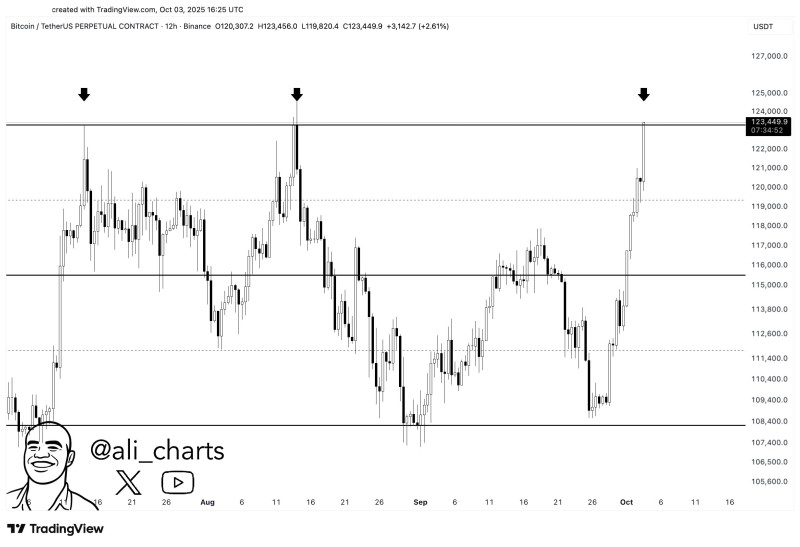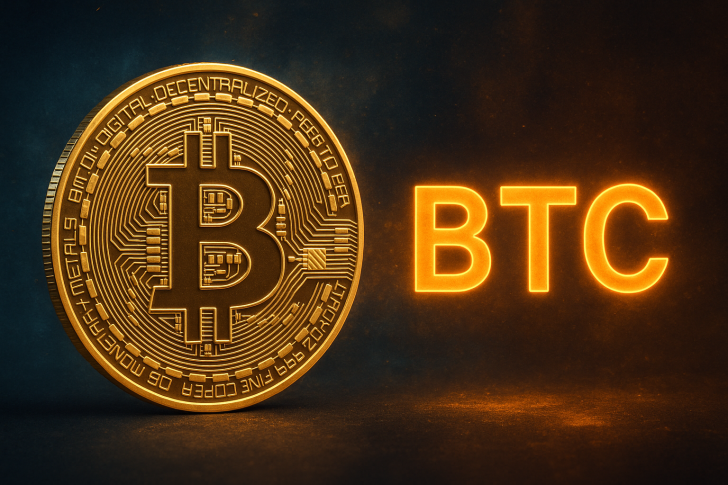Bitcoin is back at its toughest resistance level of the cycle. After climbing from below $110,000, it's now testing $124,000 again — a price that's rejected every bullish push so far. With this being the third attempt, the market's asking a simple question: will Bitcoin finally break higher, or is another rejection coming?
Bitcoin's Third Push at $124K
Crypto analyst Ali recently pointed out Bitcoin's renewed attempt at $124,000, and the "third time's the charm" phrase is making rounds. After two failed breakouts, investors are curious whether this rally has what it takes to punch through.

The 12-hour Bitcoin/USDT chart tells the story clearly. Three peaks all stopped dead at $124,000, each followed by sharp sell-offs that turned this level into a serious supply zone. But the current move looks different — Bitcoin rocketed up from around $109,000, smashing through $115,000 with real force. That kind of momentum suggests buyers aren't messing around this time.
If things go south, $115,000 should catch the fall, with deeper support sitting near $108,500. Both levels held firm during past pullbacks. But if Bitcoin closes above $124,000 with solid volume behind it, we're looking at a clear path toward $127,000 and potentially much higher. This setup is textbook: when resistance gets tested repeatedly, sellers eventually run out of steam, making a breakout more likely.
Why Bitcoin Is Rallying Now
Several things are pushing Bitcoin higher right now. Institutional money keeps flowing in from funds and corporations. The macro picture looks friendlier too — softer inflation data and talk of future rate cuts have made investors comfortable taking risks again. After weeks of going nowhere, traders seem ready to bet on upside momentum. All of this is feeding Bitcoin's current surge into resistance.
The $124,000 level is where the battle's being fought. A clean break could unleash serious bullish energy, while another rejection might bring back the volatility. Volume matters here — if it spikes during the breakout, that's institutional players jumping in, which would confirm the move's legitimacy. Keep an eye on upcoming U.S. economic data too, especially labor and inflation numbers, since they'll affect market liquidity and risk appetite.
 Saad Ullah
Saad Ullah

 Saad Ullah
Saad Ullah


